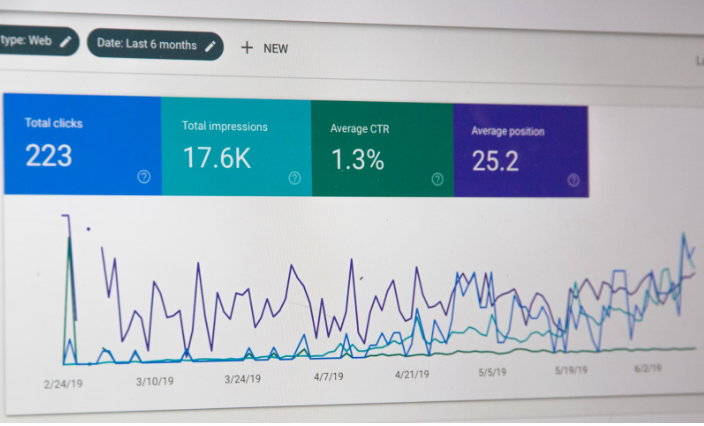To create powerful marketing campaigns that truly resonate with your audience, teams need more than just creative ideas and catchy slogans—they need a continuous flow of insights and feedback. By establishing a feedback loop between marketing, sales, and product teams, you can harness each department’s unique insights and leverage them to make smarter decisions, refine your campaigns, and ultimately drive more impact.
A strong feedback loop ensures that marketing campaigns are data-driven and aligned with customer needs, while sales and product teams stay informed on current campaigns and customer responses. When these three teams work together, they create a cycle of continuous improvement that keeps your marketing relevant, helps product adapt to customer needs, and makes sales more effective.
In this article, we’ll dive into why a feedback loop between marketing, sales, and product is essential, and how to build one that maximizes the impact of every campaign.
Why Marketing, Sales, and Product Need a Feedback Loop
Marketing, sales, and product teams each play a critical role in delivering value to customers, but too often, they work in isolation. Marketing is responsible for bringing customers in, sales for closing deals, and product for creating a product that customers love. While each team has distinct goals, they’re all part of the same customer journey. When they work together, they can provide a more seamless, informed, and customer-centric experience.
A feedback loop between these three teams creates several key benefits:
- Customer-Centric Campaigns: Sales and product teams are on the front lines of customer interaction and can provide insights into customer pain points, objections, and product usage that marketing can use to tailor campaigns.
- Enhanced Product Development: Marketing can share customer responses from campaigns, while sales shares common objections, helping product prioritize features or improvements.
- Sales Enablement: Marketing can create campaigns that address real sales challenges, improving the chances of conversions and making sales efforts more efficient.
- Faster Iteration: With a steady flow of feedback, all teams can make faster adjustments, ensuring the product, campaigns, and sales approach are always aligned with customer expectations.
Step 1: Establish a Clear Shared Goal for the Feedback Loop
A successful feedback loop begins with a shared goal that aligns marketing, sales, and product teams. This goal provides direction and ensures that each team understands their role in contributing to a cohesive customer journey.
Define What Success Looks Like
Work with each team to define a common success metric. This could be as broad as increasing customer satisfaction or as specific as improving lead-to-sale conversion rates. A shared goal keeps each department focused on the bigger picture and ensures everyone is working toward the same outcome.
For example, a shared goal might be to “reduce customer churn by 15% over the next year.” Marketing, sales, and product can each take steps to address this goal, with marketing focusing on customer engagement, sales on retention strategies, and product on enhancing features based on customer feedback.
Identify Key Metrics for Each Team’s Contribution
Once you have a shared goal, break it down into specific metrics that each team can influence. Marketing might track campaign engagement rates, sales could track closing rates, and product could measure feature adoption. This way, each team has a clear understanding of their impact on the larger goal and can track their progress over time.
For instance, if the goal is improving lead quality, marketing might focus on metrics like click-through rate (CTR) and lead scoring, while sales tracks the percentage of leads moving to qualified status, and product monitors user activation rates. These metrics help each team stay accountable while keeping their efforts aligned.
Step 2: Set Up Regular Cross-Functional Meetings

To keep the feedback loop active and effective, hold regular cross-functional meetings where marketing, sales, and product teams can discuss current challenges, share insights, and refine strategies. These meetings create a consistent space for communication, ensuring that feedback flows smoothly between teams.
Establish a Meeting Cadence and Agenda
Decide how frequently these meetings should occur—monthly, bi-weekly, or even weekly, depending on the intensity of your campaigns and product updates. Set a standard agenda that includes updates on campaign performance, customer feedback, product developments, and sales outcomes.
For instance, a monthly meeting agenda might include:
- Review of recent marketing campaigns and customer engagement data.
- Sales team feedback on customer objections, pain points, and frequently asked questions.
- Product updates on feature development and upcoming launches.
With a set agenda, everyone knows what to expect and comes prepared, making the meetings more productive and focused.
Create Actionable Follow-Ups
After each meeting, outline actionable steps for each team based on the discussion. This could involve marketing refining campaign messaging based on customer objections from sales, or product adjusting feature priorities based on customer interest shown through campaign engagement. Documenting these action items ensures that feedback turns into concrete actions.
For example, if sales reports that customers are frequently asking for a particular feature, product might prioritize it on the development roadmap. Marketing could then prepare messaging around this feature for upcoming campaigns, addressing customer interest directly.
Step 3: Implement a Centralized System for Sharing Insights
A centralized platform for tracking and sharing insights makes it easier for marketing, sales, and product teams to stay aligned. When insights are readily accessible, teams can refer back to them, stay up-to-date, and make faster adjustments without waiting for the next meeting.
Use a CRM or Collaboration Tool
A CRM platform like Salesforce or HubSpot can be a central place for all customer-related insights. Each team can update and access information relevant to their role, whether it’s lead quality, product usage, or campaign engagement.
For instance, marketing can log campaign engagement data and customer responses in the CRM, sales can record common objections, and product can update feature usage metrics. This creates a repository of insights that any team can access as needed.
Set Up Dedicated Channels for Real-Time Communication
Consider using a collaboration tool like Slack or Microsoft Teams to set up dedicated channels for real-time feedback sharing. For example, you could create a “Product Feedback” channel where sales and marketing can share customer feedback with product, or a “Campaign Performance” channel where marketing shares the latest results with sales.
For instance, when sales encounters a common objection, they can quickly post it in the feedback channel, where marketing and product can immediately see it. Real-time communication helps teams address issues promptly, keeping campaigns and product features aligned with customer needs.
Step 4: Leverage Sales Insights to Shape Campaigns

Sales teams interact with customers on a daily basis, giving them unique insights into customer needs, preferences, and objections. By leveraging these insights, marketing can create campaigns that speak directly to customer concerns, increasing engagement and conversion rates.
Identify Common Objections and Pain Points
Ask sales to regularly share the top objections and pain points they hear from prospects and customers. Marketing can use this information to create targeted content that addresses these concerns head-on, helping to alleviate objections and increase campaign relevance.
For example, if sales reports that prospects frequently question the product’s ease of use, marketing could create tutorial videos or demo content that shows how simple the product is to navigate. By addressing common objections proactively, marketing makes it easier for sales to close deals.
Highlight Key Product Features Based on Customer Feedback
Sales often hears firsthand which product features resonate most with customers. Use these insights to highlight specific features in marketing campaigns, ensuring that your messaging aligns with what customers find most valuable.
For instance, if sales finds that customers are especially interested in a time-saving feature, marketing can create campaigns that emphasize this benefit. This alignment helps attract high-quality leads who already value the product’s key features, making it easier for sales to convert them.
Step 5: Feed Campaign Results Back to Product Development
Marketing campaigns can provide valuable data on customer preferences, needs, and responses to specific features. By sharing these insights with product development, you enable them to make more informed decisions about product features, enhancements, and roadmap priorities.
Analyze Engagement Data to Inform Product Priorities
Campaign data, such as engagement rates, click-through rates, and content performance, can reveal which product features or messages resonate most with customers. Product teams can use this data to understand what customers value and prioritize related improvements.
For instance, if a campaign focusing on a specific feature sees high engagement, product might prioritize enhancing or expanding that feature. Conversely, if certain features get little attention, product may reconsider their importance or work with marketing to highlight their benefits more effectively.
Use Campaign Feedback to Identify Potential Product Gaps
Campaign feedback can also uncover gaps in the product. If customers consistently respond with interest in a capability that doesn’t yet exist, it signals a potential area for product development. By relaying this feedback to product, marketing helps guide the roadmap based on real customer interest.
For example, if a survey within a marketing campaign reveals demand for integration with other tools, product can explore adding that feature. This approach keeps the product aligned with customer expectations, making future campaigns even more compelling.

Related: Check out our free tools:

Step 6: Align on Messaging to Ensure Consistency Across Teams
Consistent messaging is crucial for a smooth customer experience. Marketing, sales, and product should collaborate to develop messaging that clearly communicates the product’s value, addresses common concerns, and reinforces the brand’s voice across all touchpoints.
Develop Key Messaging Points Together
Hold a collaborative session to establish key messaging points that reflect the product’s core benefits and address common customer objections. Marketing can provide insights on positioning, sales can share common customer questions, and product can contribute technical details.
For instance, if one of the main benefits is ease of integration, the messaging should clearly communicate how the product integrates seamlessly with other platforms. Consistent messaging helps ensure that customers receive a unified message, whether they’re interacting with a marketing campaign, talking to a sales rep, or exploring product materials.
Create a Messaging Guide for Easy Reference
Develop a messaging guide that all teams can refer to. This guide should include key value propositions, customer pain points, product benefits, and any relevant FAQs. Having a single source of truth helps each team stay aligned and reduces the risk of inconsistent messaging.
For example, the messaging guide could outline how to describe the product’s benefits, respond to common objections, or highlight new features. With this resource, marketing, sales, and product can present a cohesive message that resonates with customers and builds trust.
Step 7: Close the Loop with Post-Sale and Product Usage Feedback

The feedback loop doesn’t end once a sale is made. Post-sale and product usage feedback offer valuable insights that help improve future campaigns, refine sales strategies, and guide product enhancements. By collecting and analyzing this feedback, each team can continue to optimize their efforts.
Collect Post-Sale Feedback for Continuous Improvement
Sales and support teams can gather feedback from customers after the sale, providing insights into their experience, satisfaction, and suggestions for improvement. Share this feedback with marketing and product to refine messaging, address gaps, and enhance the product experience.
For example, if post-sale feedback reveals that customers love the product but struggle with onboarding, marketing can create an onboarding email series, and product can look at improving the onboarding process itself. Continuous improvement keeps your product and messaging aligned with real customer needs.
Monitor Product Usage Patterns
Product usage data shows how customers interact with features and what elements they use most. This data is valuable for refining both campaigns and the product itself. If usage data shows that customers frequently use a particular feature, marketing can highlight it in campaigns, while product explores ways to make it even better.
For instance, if a certain feature has high engagement, product can consider adding enhancements, while marketing incorporates it into campaigns as a key selling point. This data-driven approach ensures that the feedback loop remains relevant and impactful.
Step 8: Foster a Culture of Open Communication and Accountability
To keep a feedback loop thriving, it’s essential to create a culture where open communication and accountability are valued. When team members feel comfortable sharing insights, challenges, and successes, they’re more likely to contribute meaningfully to the loop. Accountability, in turn, ensures that feedback translates into action, keeping all teams focused on continuous improvement.
Encourage a “No Blame” Culture
When feedback involves challenges or areas of improvement, it’s essential to approach it constructively. Encourage teams to view feedback as an opportunity for growth, rather than criticism. This mindset fosters trust and helps everyone feel comfortable sharing honest insights, knowing they won’t face negative repercussions.
For example, if a sales representative shares that customers frequently mention a specific product limitation, product and marketing can use this information to address it rather than viewing it as a fault. By framing issues as opportunities, you promote a proactive, solution-focused approach that benefits the whole feedback loop.
Hold Teams Accountable for Implementing Feedback
While sharing insights is crucial, it’s equally important that each team follows through on feedback. Establish accountability by designating a point person for each action item generated in feedback meetings, whether it’s refining messaging, updating features, or creating new resources.
For instance, if sales reports that certain objections are hindering conversions, assign a marketing team member to develop content that addresses these objections. Similarly, if product receives feedback about a feature improvement, assign a product manager to explore potential solutions. Tracking accountability ensures that feedback is acted upon, making the loop effective.
Step 9: Continuously Test and Optimize Messaging and Campaigns

The insights gathered through a feedback loop are only as valuable as the actions you take. Regularly testing and optimizing your campaigns and messaging based on feedback keeps them fresh, relevant, and aligned with customer expectations. Use A/B testing and other optimization methods to see what resonates most with your audience.
Conduct A/B Testing on Campaign Messaging
When you receive feedback on campaign messaging, test different versions to see which resonates better with your audience. A/B testing allows marketing to fine-tune messages, using customer insights gathered from sales and product to improve relevance and effectiveness.
For instance, if feedback suggests customers are unclear about a product’s benefits, test a revised message that simplifies these benefits. By comparing the performance of different versions, marketing can pinpoint what resonates most and apply those insights to future campaigns, driving better engagement.
Optimize Campaigns Based on Customer Behavior
Analyze customer behavior to identify areas for campaign improvement. For example, if you see high engagement with one aspect of a campaign but a drop-off with another, use this data to adjust your approach. Cross-referencing these findings with feedback from sales and product can offer deeper insights into customer preferences.
For example, if a campaign’s landing page has a high bounce rate, marketing and product teams can review the feedback and refine the page to make it clearer or add relevant information. Regular optimization based on feedback and data ensures that campaigns continually improve and remain aligned with customer interests.
Step 10: Share Success Stories and Celebrate Wins Together
A feedback loop thrives on collaboration and shared success. Celebrating wins reinforces the importance of teamwork and keeps everyone motivated to maintain the feedback loop. Acknowledging milestones—whether it’s a successful campaign, a new product feature, or increased sales—builds a positive culture that values contributions from every team.
Highlight Case Studies of Cross-Team Success
When marketing, sales, and product come together to achieve positive results, share these stories with the entire company. Highlight how the feedback loop contributed to the success, giving credit to each team’s role in making it happen. This approach not only celebrates the win but also reinforces the value of the feedback loop itself.
For instance, if sales exceeded targets due to a campaign that addressed customer objections identified in feedback, create a case study that shows how each team contributed. Marketing crafted the right message, sales provided the insights, and product made the feature updates. These case studies serve as real-world examples of the feedback loop’s impact.
Recognize Individual Contributions
In addition to celebrating team successes, recognize individual contributions that enhance the feedback loop. This can be as simple as acknowledging a team member’s insight during a meeting or sharing a success story in an internal newsletter. Recognizing individuals fosters a sense of ownership and encourages ongoing engagement.
For example, if a sales representative consistently provides valuable insights into customer objections, recognize their contributions at a team meeting. When team members feel their efforts are appreciated, they’re more likely to actively participate and invest in the feedback loop.
Building a Customer-Centric, Data-Driven Feedback Loop
Creating a marketing-sales-product feedback loop is a powerful way to align teams, enhance customer experience, and maximize campaign impact. By bringing these teams together with a shared goal, regular communication, and a centralized system for insights, you create a cycle of continuous improvement. Each team gains a deeper understanding of the customer, making campaigns more effective, product development more aligned, and sales efforts more successful.
Start by setting clear goals, establishing regular cross-functional meetings, and implementing a centralized system for sharing insights. Leverage feedback from every stage—whether it’s campaign performance, customer objections, or product usage patterns—to refine your strategies and keep each team aligned with customer needs.
In today’s fast-paced market, a strong feedback loop isn’t just beneficial; it’s essential. It enables your teams to adapt quickly, stay relevant, and deliver value that resonates with customers. So bring your marketing, sales, and product teams together, build that feedback loop, and watch as your campaigns, product, and customer relationships grow stronger than ever.
READ NEXT:
- Are Vanity Metrics Killing Your Marketing Efficiency? Here’s What to Track Instead
- Pinpointing Digital Marketing ROI: Why Your Metrics Aren’t Telling the Full Story
- Unlocking Real ROI in Digital Marketing: The Hidden Costs Draining Your Budget
- How Misaligned Marketing Funnels Are Blocking Your ROI Potential
- Best Digital Marketing Agency In Santa Ana, California
- Best Digital Marketing Agency In San Francisco, California





















